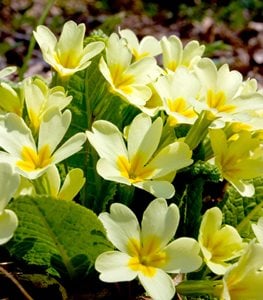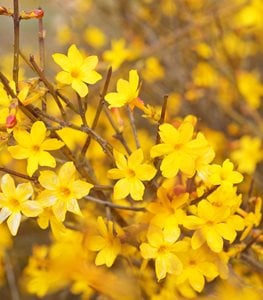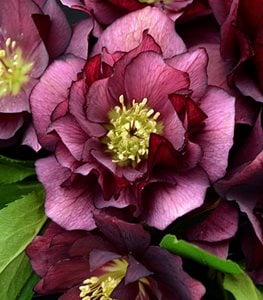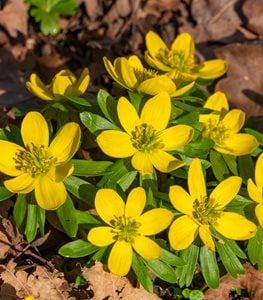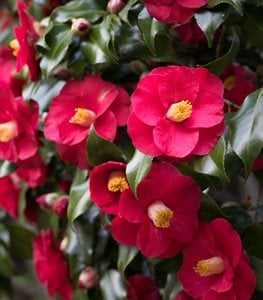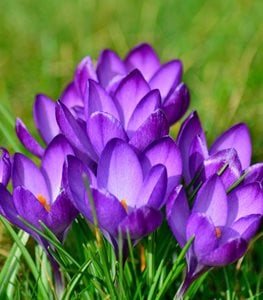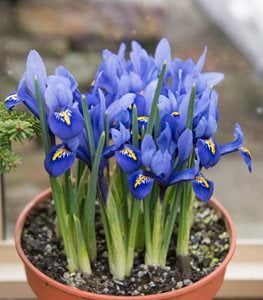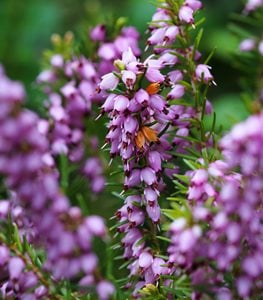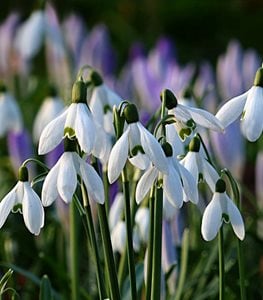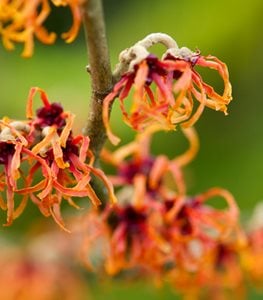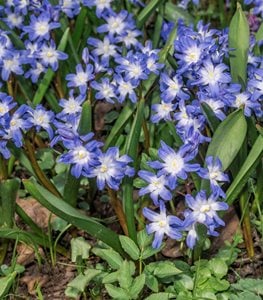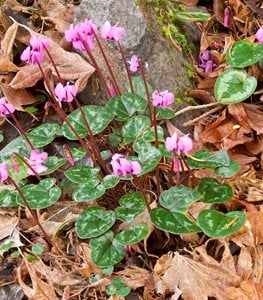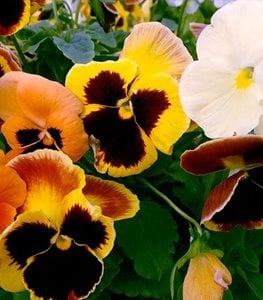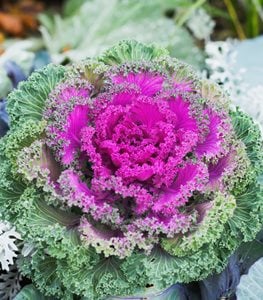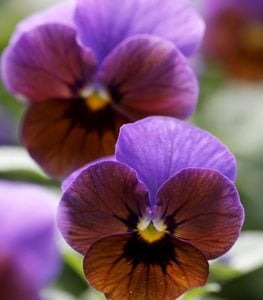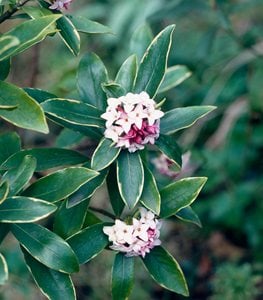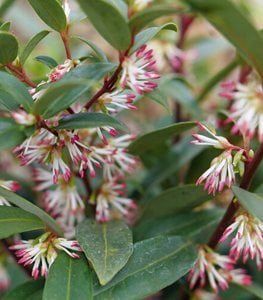16 WINTER FLOWERS FOR YOUR GARDEN
Undaunted by snow and cold temperatures, winter is the time for these arctic beauties to shine.When the weather outside is cold and frightful, nothing is more delightful than a garden adorned with winter-blooming plants. Surprisingly, many types of flowering annuals, perennials, and shrubs are at their best during the coldest time of the year, bringing color and interest to the garden when you need it most. Some flowers, such as snowdrops, will even poke their heads through a blanket of snow.
You can grow a winter flower garden in almost any climate as long as you choose plants suitable for your hardiness zone. Some plants that bloom enthusiastically during the mild winters of the South or along the West Coast may not fare as well in colder regions. The planting time is also important. Most winter bloomers should be planted in the fall, while the soil is still warm, so they can establish roots before cold weather arrives.
BEST WINTER FLOWERS
ENGLISH PRIMROSE (Primula vulgaris)
Plant type: Perennial
Zones: 4-8
Exposure: Partial shade
Bloom time: Late winter to early spring
Height/Spread: 6 to 12 inches tall, 8 to 9 inches wide
You’ll often see primroses sold as houseplants in the spring, but here’s a cold-hardy variety that will bloom as early as March when planted outdoors, brightening bleak winter days with its charming clusters of pale-yellow flowers. Like most primroses, it thrives in partial shade and moist soil, making it a great addition to a woodland garden.
For even more winter color, garden centers also offer hybrid primroses (Primula × polyantha) in a wide range of bright shades. These are often grown as annuals but can provide cheerful blooms from late winter into spring in mild climates.
Learn more about how to grow primrose flowers.
WINTER JASMINE (Jasmine nudiflorum)
Plant type: Shrub
Zones: 6-10
Exposure: Full sun to part shade
Bloom time: Late winter
Height/Spread: Up to 15 feet on a vertical support, up to 4 feet wide when allowed to sprawl
Although often mistaken for a forsythia because of its brightly colored yellow flowers, winter jasmine begins to bloom earlier and the blossoms last longer, often lingering for up to 8 weeks. The slender, willowy branches are attractive as well and remain green throughout the winter. This shrubby vine can be grown as a groundcover or trained to climb.
HELLEBORE (Helleborus spp. and hybrids)
Plant type: Perennial
Zones: 4-9
Exposure: Partial to full shade
Bloom time: Mid to late winter
Height/Spread: Up to 24 inches tall and wide
Also called Christmas rose or Lenten rose, this evergreen perennial blooms as early as December in areas with warm winters. In colder climates, it often waits until late winter (around the time of Lent) to reveal its exquisite rose-like flowers, some of which have double petals and dramatic bi-colored patterns. "Hellebore blossoms last a long time, making them a favorite of florists, and though the sepals will fade slightly, they persist on the plant for well over a month." — Brooklyn Botanic Garden
Learn more about how to grow hellebores.
Pictured: Wedding Party® True Love from Proven Winners
WINTER ACONITE (Eranthis hyemalis)
Plant type: Bulb
Zones: 3-7
Exposure: Full sun to part shade
Bloom time: February to March
Height/Spread: 3 to 4 inches tall
One of the earliest bulbs to bloom, often appearing alongside snowdrops, winter aconite warms up the late winter landscape with its cheery buttercup-like yellow flowers. An excellent choice for naturalizing, these long-blooming plants will multiply freely, spreading by seed to form a dense carpet of color.
CAMELLIA (Camellia japonica)
Plant type: Shrub
Zones: 7-10
Exposure: Partial shade, sheltered from hot afternoon sun
Bloom time: Mid to late winter, spring
Height/Spread: 6 to 12 feet tall and wide
Sometimes called the Rose of Winter, this gorgeous evergreen shrub is a staple of gardens in the South, where its plush rose-like blooms in shades of red, pink, or white will appear as early as December and continue for months. Although camellias typically need mild winters to survive, some newer hybrids are cold hardy down to Zone 6. For flowers from late fall to midspring, plant a combination of early-, mid- and late-blooming varieties.
Learn more about how to grow camellias.
CROCUS (Crocus spp.)
Plant type: Bulb
Zones: 3-8
Exposure: Partial to full sun
Bloom time: Late winter to early spring
Height/Spread: 3 to 6 inches tall and wide
A harbinger of a new season, this early-blooming bulb lets you know that spring is right around the corner, starting with the cold-defying snow crocus and continuing with the larger, showier Dutch hybrids, providing a colorful display for weeks. All crocuses will multiply readily in the garden, continuing to delight year after year.
Learn more about growing crocus flowers.
JAPANESE PIERIS (Pieris japonica)
Plant type: Shrub
Zones: 5-8
Exposure: Full sun to partial shade
Bloom time: Late winter to early spring
Height/Spread: 9 to 12 feet tall, 6 to 8 feet wide
This shade-tolerant evergreen shrub is stunning year-round but is especially dazzling in late winter, when the branches are covered by clusters of lily-of-the-valley-like blooms in white, pink or deep rose. The flowers last for weeks, followed by the emergence of new bronze-red foliage in spring that matures to a glossy dark green. For smaller gardens, you can also find compact cultivars, such as Interstella® (pictured), that reach a mature height of only 3 to 4 feet.
Learn more about growing Japanese pieris.
RETICULATED IRIS (Iris reticulata)
Plant type: Bulb
Zones: 5-9
Exposure: Full sun to partial shade
Bloom time: March
Height/Spread: 3 to 6 inches tall
Small in stature but big in wow factor, this extra-early iris is similar in appearance to its larger cousins, boasting vibrant royal blue flowers and distinctive white and yellow markings. It has the biggest impact when grown in mass, but is slow to naturalize. To ensure a consistent display of flowers every year, plant new bulbs each fall.
WINTER HEATH (Erica carnea)
Plant type: Shrub
Zones: 5-7
Exposure: Full sun to partial shade
Bloom time: peaks January to March
Height/Spread: 6 to 12 inches tall and wide
Also called snow heath, this low-growing evergreen shrub is brimming with clusters of bell-shaped blossoms throughout the winter, sometimes flowering through snow-covered ground. An excellent groundcover, it spreads quickly to form a dense carpet of needle-like foliage that remains attractive year-round. Many cultivars are available offering flowers in shades of pink, white, purple, and red. "These hardy, low-growing plants produce a wide variety of bell-shaped or tubular flowers for what seems like an eternity—from October and November into April and May." — National Gardening Association
SNOWDROPS (Galanthus nivalis)
Plant type: Bulb
Zones: 3-9
Exposure: Full sun to partial shade
Bloom time: Late January to March
Height/Spread: 6 to 12 inches tall, 4 to 6 inches wide
True to their name, these early-blooming bulbs often emerge while snow is still on the ground to provide a breath of fresh air for winter-weary gardeners. In mild winters, snowdrops can flower as early as late January, but February or March is more common. Left undisturbed, the bulbs will multiply over time and are most effective when planted in areas where they can naturalize, such as woodland margins. "The tips of their leaves are especially hardened for breaking through frozen ground and their sap contains a form of antifreeze that prevents ice crystals from forming," — Lincolnshire Wildlife Trust.
Learn more about growing snowdrop bulbs.
WITCH HAZEL (Hamamelis spp.)
Plant type: Shrub
Zones: 4-8
Exposure: Full sun
Bloom time: January through March
Height/Spread: 10 to 20 feet tall, up to 15 feet wide
Witch hazels are invaluable shrubs for winter interest, flowering abundantly from late winter through early spring, even in colder climates. The spider-like flowers, which range in color from yellow to red, stand out prominently on bare branches and are often intensely fragrant. In fall, the foliage turns rich shades of red, orange, and yellow.
Learn more about growing witch hazel.
GLORY OF THE SNOW (Chionodoxa forbesii)
Plant type: Bulb
Zones: 3-8
Exposure: Full sun to partial shade
Bloom time: February through March
Height/Spread: 6 to 12 inches tall, 3 to 6 inches wide
After you wave goodbye to the snowdrops and wait for the appearance of spring daffodils, glory-of-the-snow bulbs become the superstars of the late-winter garden. Their brilliant blue, star-shaped flowers feature striking white centers that almost twinkle on a frosty day. They are especially glorious when allowed to naturalize in rock gardens, woodland areas, or lawns.
HARDY CYCLAMEN (Cyclamen coum)
Plant type: Bulb
Zones: 4-8
Exposure: Light to full shade
Bloom time: January through March
Height/Spread: 3 to 4 inches tall, 8 to 12 inches wide
Although cyclamen is usually grown as a houseplant, this extra-hardy variety (also called Persian violet or winter cyclamen) thrives outdoors and is at its peak during the winter months, when cold weather coaxes the foliage and flowers from summer dormancy. The handsome heart-shaped leaves appear first, followed by delicate pink or white flowers that begin blooming as early as December and continue through March. Plants will readily self-sow and naturalize to form a beautiful winter groundcover.
Learn more about growing cyclamen plants.
PANSY (Viola x wittrockiana)
Plant type: Usually grown as an annual, may return in warmer climates
Zones: 6-10
Exposure: Full sun to partial shade
Bloom time: Fall, winter, early spring
Height/Spread: 6 to 9 inches tall, 9 to 12 inches wide
Fall-planted pansies add brilliant color to the late-season garden and will often bloom throughout the winter months in areas with mild climates. Although they typically stop flowering after a hard frost, they are often resilient enough to survive through winter and bloom again in the spring, giving you two seasons of interest.
Learn more about growing pansies.
ORNAMENTAL KALE & CABBAGE (Brassica oleracea)
Plant type: Usually grown as an annual
Zones: 2-11
Exposure: Full sun to partial shade
Bloom time: Fall through early winter
Height/Spread: 12 to 18 inches tall and wide
Sometimes called flowering kale or cabbage, these showy cool-season biennials are actually grown for their colorful rosettes of frilly foliage, which resemble flowers in bloom. The colors become even more vivid as the temperatures drop in fall, with the foliage often remaining attractive through winter in mild climates.
VIOLA (Viola spp.)
Plant type: Usually grown as an annual
Zones: 4-9
Exposure: Full sun to partial shade
Bloom time: Fall, winter, spring
Height/Spread: 6 to 8 inches tall and wide
Like their pansy cousins, violas will keep on blooming through frosty weather and even a dusting of snow. In moderate climates, they will often bloom all winter long. Although the cheery flowers are smaller and daintier than those of pansies, they come in a similar array of striking color combinations. Violas will languish during the heat of the summer, so wait until the cooler weather of fall arrives before you plant them.
MAHONIA (Mahonia spp.)
Plant type: Shrub
Zones: 5-9
Exposure: Full sun to partial shade
Bloom time: Late fall to early winter
Height/Spread: 6 to 10 feet tall, 4 to 6 feet wide
Also called Oregon grape, mahonia brings bold texture to the winter garden with its spiky, holly-like evergreen foliage and clusters of bright yellow flowers that often appear in late fall and persist through midwinter. The blooms are lightly fragrant and provide valuable nectar for pollinators at a time when little else is available. Blue-black berries often follow the flowers, adding even more seasonal interest.
DAPHNE (Daphne odora)
Plant type: Shrub
Zones: 7-9
Exposure: Partial shade
Bloom time: Late winter
Height/Spread: 3 to 4 feet tall and wide
Highly prized for its fragrance, daphne is a compact evergreen shrub that bursts into bloom in late winter with clusters of pink to white flowers. The perfume is so strong that a single plant can scent an entire patio or entryway. Though somewhat finicky to grow, daphne is worth the effort for its show-stopping winter display and intoxicating scent.
SARCOCOCCA (Sarcococca spp.)
Plant type: Shrub
Zones: 6-9
Exposure: Partial to full shade
Bloom time: Mid to late winter
Height/Spread: 3 to 5 feet tall and wide
Sweet box is an understated evergreen shrub valued for its glossy foliage and small, creamy white flowers that release a surprisingly strong, sweet fragrance in mid- to late winter. Often planted near paths and doorways so the scent can be appreciated up close, sarcococca also produces shiny black berries that extend the season of interest. It’s especially useful in shaded spots where other winter bloomers may struggle.
Pictured: Sweet & Lo™ Sweet Box from Proven Winners
ABOUT THE AUTHOR
Anne Balogh is a longtime gardening writer and editor for Garden Design, with over 20 years of experience covering everything from container planting to landscape trends. She draws inspiration from her own Zone 5 garden in Illinois, where she experiments with hardy perennials and flowering annuals.
RELATED:
The Best Flowers for Your Fall Garden
Popular Spring Flowers
Summer Flowers for Your Garden
Ways to Create Winter Interest in the Garden
